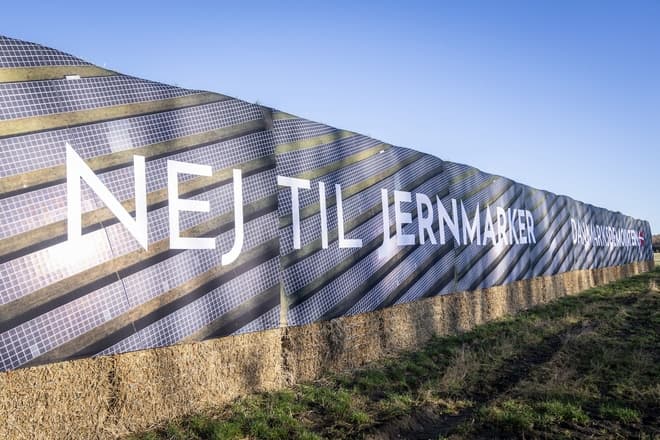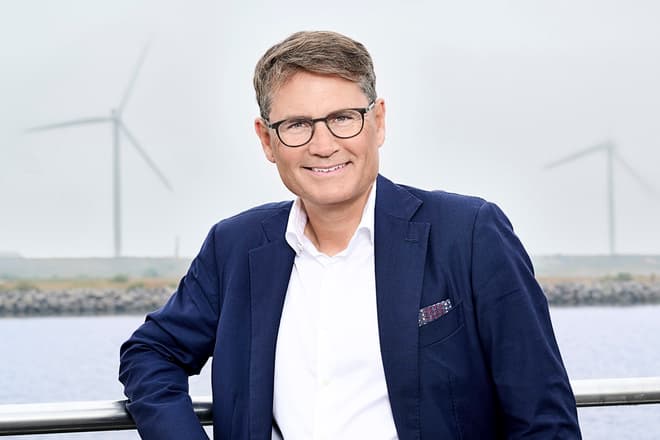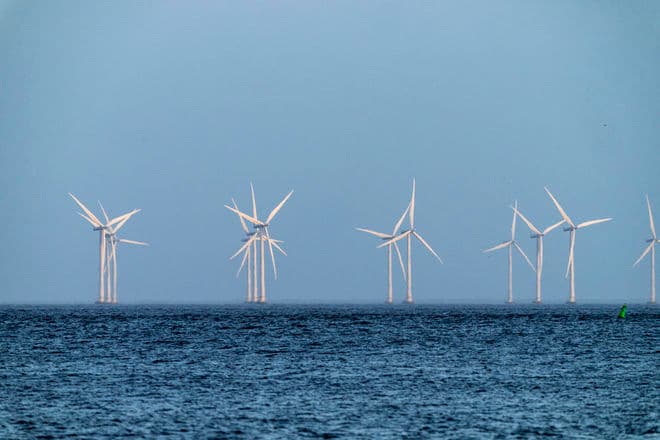Ørsted has entered into an agreement with the investment company Copenhagen Infrastructure Partners (CIP) to develop 5.2 GW of offshore wind in Denmark. The company writes this in a press release.
This will double Denmark's current amount of offshore wind, the announcement says. The agreement includes four different projects, which are expected to be ready in 2027 or 2028.
- The four large open door projects can help cement Denmark's continued leading position and create the foundation for kick-starting the next phase of a Danish business adventure in the production of green hydrogen and green fuels, says Rasmus Errbo, Regional Director at Ørsted, in the announcement.
- I am very excited about the partnership with CIP, where we combine our unique skills and knowledge to develop a significant part of Denmark's offshore wind resources.
Two of the offshore wind turbine projects will be located in the North Sea, and the other two are planned to be located in the Baltic Sea. Ørsted, together with CIP, will be responsible for the development, construction and operation of the offshore wind farms.
The partnership envisions that the open door projects can create a Danish industrial adventure within Power-to-X by delivering large amounts of renewable energy as soon as possible and thus aiming for 2027/2028, if possible.
- We are proud to, together with Ørsted, give our proposal on how we can ensure Denmark the green energy that has never been more necessary than these days. If we succeed in implementing the projects, we will also secure the green electricity that is necessary to give the Danish Power-to-X industry a much-needed boost, and we are pleased with the support from the Danish pension funds and their members, who prioritize and invest in the green transition, says Torsten Lodberg Smed, senior partner at Copenhagen Infrastructure Partners.
Political ambitions increased
From a political perspective, it was decided earlier this year that the number of offshore wind turbines in both the North Sea and the Baltic Sea should be significantly increased.
Most recently, Denmark agreed with the other Baltic Sea countries that the capacity for offshore wind in the Baltic Sea should be increased sevenfold and increased to 19.6 GW by 2030.
Denmark has also committed, together with Germany, the Netherlands and Belgium, to tenfold the production of offshore wind in the North Sea by building new energy islands.
Specifically, the goal is to deliver at least 65 gigawatts of offshore wind by 2030 and increase capacity to at least 150 GW by 2050. This could supply up to 230 million European households with green electricity.
The partnership between Ørsted and CIP is subject to regulatory approval, which is expected before the end of 2022.
amp / ritzau/
Text, graphics, images, sound, and other content on this website are protected under copyright law. DK Medier reserves all rights to the content, including the right to exploit the content for the purpose of text and data mining, cf. Section 11b of the Copyright Act and Article 4 of the DSM Directive.
Customers with IP agreements/major customer agreements may only share Danish Offshore Industry articles internally for the purpose of handling specific cases. Sharing in connection with specific cases refers to journaling, archiving, or similar uses.
Customers with a personal subscription/login may not share Danish Offshore Industry articles with individuals who do not themselves have a personal subscription to Danish Offshore Industry.
Any deviation from the above requires written consent from DK Medier.
























